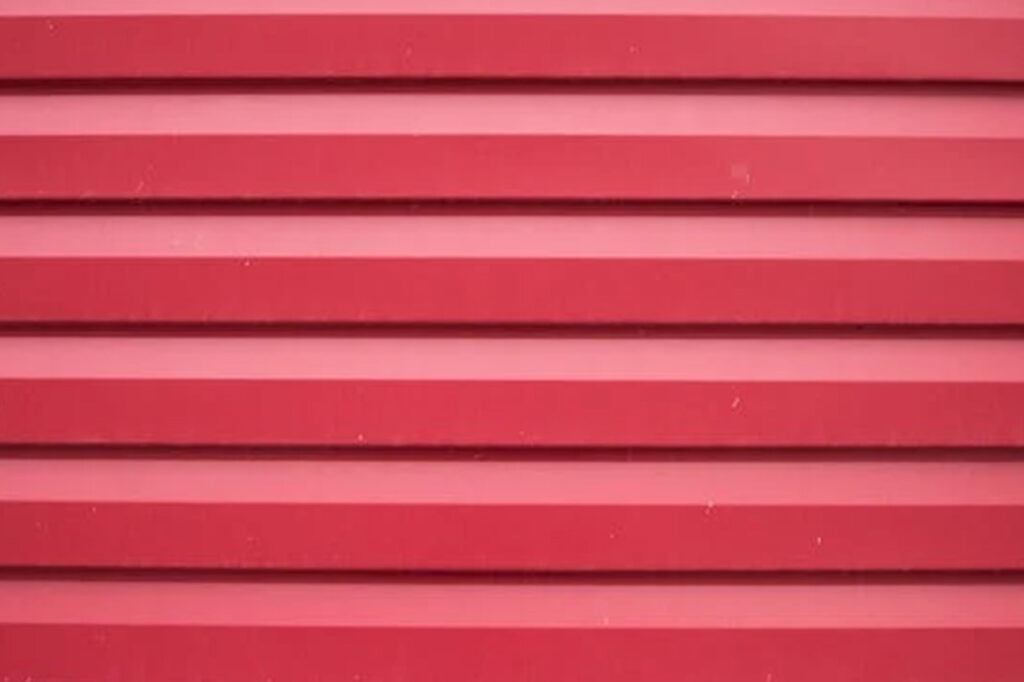Do you know that there are many types of steel?
Steel continues to be one of the most trusted materials in the construction world. Among the many forms it takes, red iron steel stands out. Its striking rust-colored appearance is not merely for show.
Red iron steel has carved out a place in the industry thanks to its strength, durability, and resistance to various environmental factors.
This article explores what red iron steel is, how it is used, and why it may be a smart choice for your next building project.
About Red Iron Steel
Red iron steel refers to steel I-beams that are coated with red oxide. This red oxide serves as a protective layer that helps prevent corrosion and rust. The name comes from the distinctive red hue the steel takes on after the application of this primer. Red iron steel is commonly used in the framework of metal buildings, including warehouses, barns, and industrial facilities. Its robust profile and built-in corrosion resistance make it highly suitable for structural applications.
Unlike light gauge steel, which is typically cold-formed and thinner, red iron steel is heavier and hot-rolled. This makes it capable of bearing more weight and withstanding harsh conditions. The coating is not just for initial protection. It also improves the longevity of the steel, reducing maintenance requirements over time. Because of these advantages, red iron steel has become a favorite in both commercial and agricultural construction.
The Manufacturing Process
Creating red iron steel begins with the production of standard structural steel. This steel is shaped into I-beams or H-beams using hot rolling methods. After the beams are formed, they are cleaned thoroughly to remove any surface contaminants such as oil, scale, or rust. This ensures that the red oxide primer adheres properly.
Once the cleaning is completed, the red oxide primer is applied. This primer is usually iron oxide based and acts as a shield against moisture and other corrosive elements. The application can be done through spraying, dipping, or brushing, depending on the size and complexity of the beam. Once the primer dries, the beams are ready for transport and installation.
Structural Strength and Load Bearing
One of the most compelling features of red iron steel is its impressive structural strength. The I-beam shape itself is engineered to handle significant loads. Red iron steel is commonly used in buildings where large spans are needed without intermediate support columns. This capability allows for open interior layouts, which are ideal for storage, manufacturing, or even residential use in modern barn-style homes.
The strength of red iron steel also makes it resilient in the face of natural forces. High winds, snow loads, and even seismic activity are better managed with a framework made from this material. Engineers often choose red iron steel when designing buildings that must meet rigorous safety standards. Its predictability under stress and consistent quality make it easier to plan and execute large projects without unexpected complications.
Durability and Longevity
Red iron steel structures are known for their long service life. The red oxide coating protects the steel from the elements, particularly moisture, which is a major cause of corrosion in untreated metals. In climates where humidity or rainfall is high, the coating acts as a first line of defense against rust. This means the building framework remains solid and intact for decades.
Another advantage is the minimal maintenance required. The red oxide primer does not need frequent reapplication. Buildings made with red iron steel usually do not require extensive upkeep unless they are exposed to extreme conditions or physical damage. This low-maintenance aspect can translate into significant cost savings over the life of the building.
Ease of Construction
Red iron steel is prefabricated, meaning it is manufactured off-site to exact specifications. This makes the construction process faster and more efficient. When the components arrive at the building site, they can be assembled quickly, reducing labor costs and minimizing disruption. The beams are designed to fit together in a predictable manner, which helps ensure quality control during construction.
The prefabrication process also enhances safety. Since much of the cutting and shaping is done in a controlled environment, the risk of errors and accidents on site is reduced. This level of precision is particularly useful for complex or large-scale projects where even small deviations can lead to delays or structural issues.
Environmental Benefits
Sustainability is becoming more important in construction, and red iron steel has several environmental advantages. Steel is one of the most recyclable materials on the planet. When a red iron steel building reaches the end of its life, the steel can be reclaimed and reused, minimizing waste. The durability of the material also means that fewer resources are needed for repairs or replacements.
Moreover, red iron steel buildings are often more energy efficient. The open design enabled by the strength of the I-beams allows for better airflow and natural lighting. These features can reduce the need for artificial heating, cooling, and lighting, contributing to lower energy consumption over time. The use of recyclable materials and energy-efficient designs aligns well with modern green building standards.
Comparison to Other Materials
When choosing a material for structural framing, builders often compare red iron steel with wood and light gauge steel. Wood is easier to work with but lacks the strength and fire resistance of steel. It is also more susceptible to pests and moisture. Light gauge steel, while also resistant to pests and rot, does not have the same load-bearing capacity as red iron steel and may require additional support in larger buildings.
Red iron steel provides a middle ground. It offers the durability and strength of heavy steel while being more manageable than full structural steel assemblies. Its pre-primed coating also gives it a head start in terms of longevity and protection. For projects requiring both strength and reliability, red iron steel often emerges as the best option.
Design Flexibility
Red iron steel can be used in a wide variety of architectural styles. Its load-bearing capabilities allow for creative freedom in design, enabling large open spaces, high ceilings, and wide entryways. This makes it suitable not just for industrial and agricultural uses but also for custom homes and retail spaces.
Designers appreciate the adaptability of red iron steel when creating modern or rustic looks. The beams can be left exposed for an industrial aesthetic or concealed for a cleaner finish. The compatibility with various materials such as wood, glass, and brick allows for innovative blends of traditional and contemporary elements. This design flexibility adds value to the structure and can improve both functionality and appearance.
Cost Considerations
Initial costs for red iron steel may be higher compared to wood or light gauge steel. However, these costs are often offset by reduced maintenance, longer life span, and faster construction times. The total cost of ownership over the life of the building tends to be lower, making red iron steel a cost-effective choice in the long term.
It is also worth noting that fluctuations in material prices can affect the affordability of steel. Global demand, supply chain disruptions, and raw material costs all play a role. Even with these variables, red iron steel remains a competitive option due to its performance and durability.
Common Applications
Red iron steel is used in a variety of building types. Warehouses, factories, and agricultural barns frequently rely on its strength and resilience. It is also found in sports complexes, airplane hangars, and even residential homes. The ability to span large distances without support columns makes it ideal for open-plan spaces that need flexibility.
More recently, red iron steel has gained popularity in the residential sector. Homeowners looking for strong and modern designs are opting for metal homes constructed with this material. The same advantages that make it suitable for industrial use translate well to personal residences that need long-lasting and low-maintenance features.
Challenges and Limitations
Despite its many benefits, red iron steel is not without challenges. The weight of the beams can make transport and handling more complicated. Specialized equipment may be needed for installation, which could increase labor costs. In addition, the red oxide primer is not a final finish. Additional painting or coating may be necessary for aesthetic purposes or extra protection.
Another consideration is that not all construction crews are familiar with red iron steel. This can lead to mistakes or inefficiencies if the team does not have the right experience. Choosing a contractor with knowledge in metal building systems is essential to fully realize the benefits of red iron steel.
Conclusion
Red iron steel is a robust, durable, and reliable material that is well-suited for a wide range of construction projects. Its protective red oxide coating adds an extra layer of defense against corrosion and contributes to its long life. Builders and designers value its structural integrity, versatility, and environmental benefits.
From industrial warehouses to modern homes, red iron steel proves itself to be a practical and forward-thinking choice. Understanding its properties, advantages, and limitations can help you make an informed decision for your next building project. Red iron steel may just be the smart investment that brings both immediate and long-term rewards.

